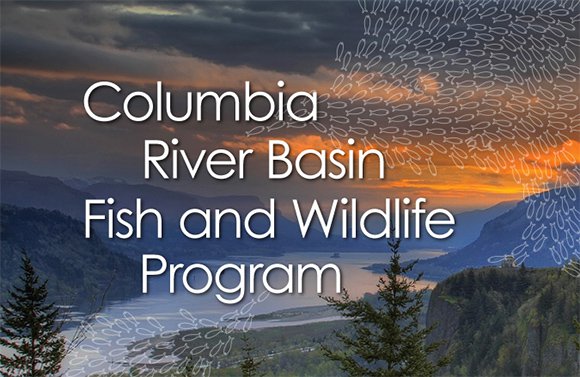Council Assesses 40 Years of the Basin’s Fish and Wildlife Program
- September 21, 2022
- Deston Nokes

At the September Fish and Wildlife Committee meeting, staff completed their presentation on part one of a five-part retrospective on how the Fish and Wildlife Program has performed over the last 40 years. Part one covered the impetus for the Power Act, the development of the hydrosystem, the history of the Fish and Wildlife Program, and how that Program has developed over time in relation to regional events. This continued a presentation to the committee in August, covering program development through the 1990s.
Dr. Kris Homel, the Council’s biologist for program performance, said the historical context provides key information on why different elements have been included in the Program over time, what kind of changes were expected to occur, where those changes could happen, and when they could occur.
Program history
In the September presentation, Homel recapped examples of Program highlights accomplished in the 1980s and 1990s. These included establishing 44,000 miles of areas protected from future hydroelectric development and identifying wildlife losses from the construction, inundation, and operation of the hydrosystem.
Homel listed the notable regional events from 2000 through 2011, such as different BiOps, ESA listings, litigation, court-ordered spill, and mitigation agreements. In addition, long-term funding agreements were negotiated, including Bonneville’s Columbia Basin Fish Accords and the Mid-Columbia PUD’s 50-year mitigation agreement. This incorporated actions for bypass, spill, hatchery production, and restoration.
The Council restructured its Fish and Wildlife Program in 2000 by developing a scientific framework linking program work to objectives, goals, and an overall vision. This new Program emphasized improved ecosystem function and that the natural environment should serve as the environmental baseline. The Program was now habitat-based, with specific hydrosystem operations appearing in the BiOps. In 2003, there were mainstem amendments to the Program for habitat restoration and hydrosystem operations, and in 2004 and 2005, the Council adopted plans for 59 specific subbasins.
Patty O’Toole, Fish and Wildlife director, said the subbasin plans were a big lift for the region and provided an opportunity to engage agencies, tribes, and other stakeholders in their development. These subbasin plans became the genesis for recovery plans, and many are still in use today.
In the 2000s, a significant program accomplishment was the development of the Columbia Basin Water Transactions Program. Investment in water transactions has resulted in substantial improvements in instream flows, habitat, and water quality throughout the basin. Committee Chair Jeff Allen called it a tremendously successful program.
Between 2012 and 2022, there were notable climate events, including low survival rates due to marine heat waves, widespread wildfires, prolonged drought, and extreme temperatures. It demonstrates how vulnerable this region is to climate change, Homel said. The decade also saw continued litigation on the BiOp and new spill agreements. Homel said a highlight was the delisting of Oregon Chub in 2015, the first fish species delisted due to recovery — benefiting from habitat restoration and wildlife mitigation projects conducted through the Fish and Wildlife Program in the Willamette Basin. There was progress addressing pinniped predation, collaborating on salmon recovery planning, negotiations to modernize the Columbia River Treaty, and numerous discussions on the future of the Snake River Dams.
The Program was revised in 2014 and again in 2020, and now includes a set of quantitative objectives, goals, and strategy performance indicators (SPIs) to inform tracking Program performance. This current Program is a compilation of the types of work implemented since 1982, and the innovations and research that have contributed to new topics or advanced approaches. For example, it highlighted the need to consider the effects of climate change on Fish and Wildlife Program efforts. There has also been growing recognition of hydrosystem impacts on sturgeon, lamprey, eulachon, and burbot.
A key element of the 2014 program was a set of emerging priorities. These included actions that needed to be expanded or added as priority topics. In 2020, some of these were re-emphasized as priorities, and additional topics were highlighted as priorities for the near term.
An example of accomplishment from this most recent decade is the effort to prevent the establishment of invasive Zebra and Quagga Mussels. The Council highlighted this as an emerging priority in 2014 and urged the Corps of Engineers to help fund watercraft inspection stations, monitoring, and rapid-response efforts. This is now a cost-share program between the Corps and the four Columbia Basin states.
Assessing program performance
Dr. Leslie Bach, program manager, described the approach towards parts 2 – 5 of this performance assessment. The steps include identifying inputs, outputs, and outcomes — what was called for, what was done, and what was accomplished. “We’re looking at physical and biological change over time, the effectiveness of program strategies, and progress toward goals and objectives.”
The assessment looks at four categories: hydrosystem; habitat; natural production and artificial propagation; and program adaptive management. For each of these categories, staff will describe actions implemented over time at the scale of the Columbia River Basin/ Fish and Wildlife Program and the geographic scale of provinces.
This effort will draw on datasets assembled for the SPIs to characterize what kinds of changes have occurred. Bach said there’s a total of 104 SPIs, representing a tremendous amount of data provided by the fish and wildlife managers.


